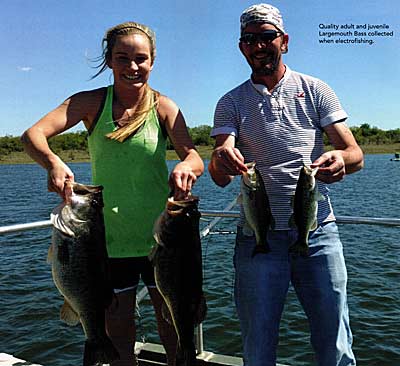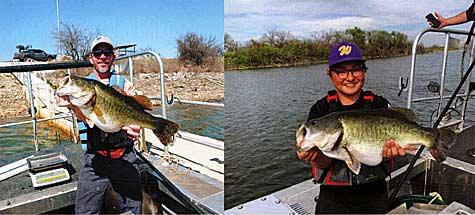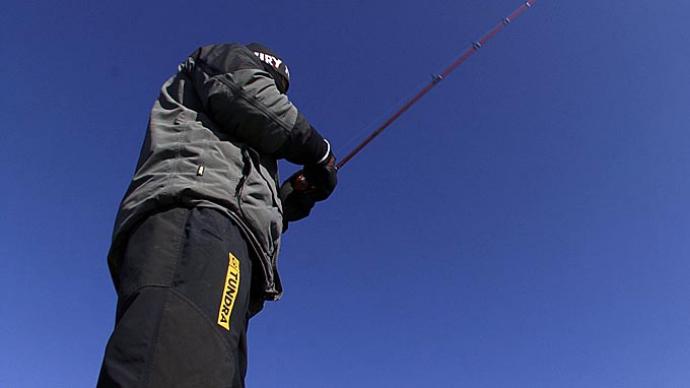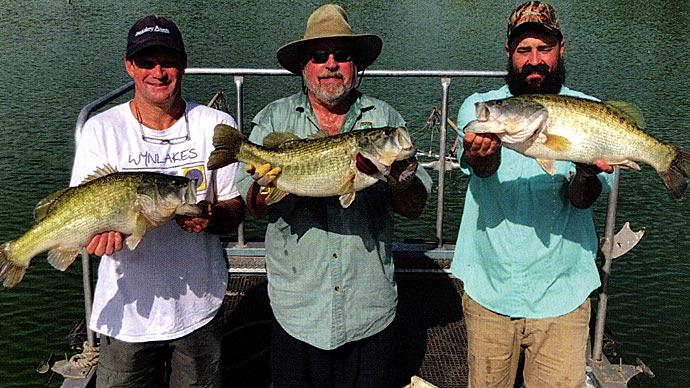
The welcome feeling and organic energy surrounding tight-knit family and friends spending time together are incredible. Meals shared around activities. Recalling past adventures fuels traditions that became part of the culture. These times of stories and laughter set the stage for new memories. In these environments, the energy is in the air, palpable, and you sense these moments are some of the best life has to offer.
The Willis family outside of Abilene, Texas, has built an incredible culture and an incredible fishery shared with friends as they draw loved ones closer. They understand how blessed they are and make the most of their time together.
Spending time outdoors is a common theme amongst families who have been able to accomplish a culture of this nature. This case is no different, with a thriving fishery playing an essential role in the culture and traditions created.
This fishery was built on a solid foundation, and as a result, it is highly successful.
Thirty-one acres in size, the lake is the focal point of the family ranch. A seasonal stream entering the lake transforms into a meandering channel 10 feet deep and ranges in width from 50 to 150 feet across during a typical year. (Whatever "normal" means anymore.) The creek is lined with vertical, rocky limestone bluffs and standing timber. The main body of the lake has a great deal of character, with standing timber along the perimeter and a couple of pockets of standing timber in open water that provide a unique character. The lake is a Largemouth bass paradise with a nice mix of deep and shallow water.
Back in 2012, fisheries biologist Paul Dorsett worked with the family to transform their beautiful, newly-built lake into a trophy bass fishery with the primary goal of producing bass greater than 10 pounds:
- Water quality samples were collected and analyzed, and forage fish were stocked, starting with bluegill, redear sunfish, and fathead minnows. Fish feeders were installed, and fish fed aggressively.
- A fertilization program was implemented.
- A bottom-diffused aeration system was installed to promote healthy water quality and support a productive plankton bloom.
All these techniques were focused on fundamental aquaculture practices to produce as many baby forage fish as possible while establishing a base of sunfish to grow and spawn for years to come.
That summer, the same year the forage fish were stocked, F1 Largemouth Bass (50% Florida, 50% northern genetics) fingerlings, and some channel catfish were stocked. The genetic selection was based on providing the best-of-the-best genetics to grow big bass and retain the aggressive nature inherited from northern strain fish to provide reasonable catch rates.
A data-driven adaptive management strategy was implemented to assess the fishery's progress and then pivot as needed based on the data collected. To do this, the fishery is sampled using an electrofishing boat each spring and fall. Water quality samples are also collected and analyzed seasonally. Since 2013, threadfin shad have been stocked annually, which is key to maintaining a robust forage base for this lake.
After the bass were stocked, the area suffered an intense drought. It intensified and lasted until 2015. With the waterline constantly receding, dense shoreline fish cover once protecting bait was now collecting dust on dry land. Less water, cover... and ultimately less plankton...created an environment where forage fish no longer outpaced their predation rates.
The lake was shrinking as bass were growing. Diligent management was critical.
One of the most important keys to creating a trophy fishery is maintaining forage fish numbers that can outpace predation rates. With lake levels constantly falling here, the density of bass per surface acre shifted to an unfavorable ratio for a trophy fishery. To solve this, a portion of the initial bass population was harvested to reduce their population. Although it was a difficult decision to make, it was the right decision. The fishery had to be culled to thrive in a lake with a declining water level.
Decisions surrounding bass density seems simple (cull more bass), but as seen repeatedly, these decisions often impact the extent of "trophy status" that the fishery achieves. This drought was a fork in the road, and they chose to take a right. Looking back years later, harvesting bass was the correct decision.
Selective culling kept the lake on track by keeping the best fish and culling those that, in Paul's opinion, couldn't make the cut over the long term.

In 2015, rains came—all droughts seem to end with a flood—and management decisions followed by hard work led to an outstanding fishery that began producing a great deal of quality fish. When the lake expanded, the fishery responded with heavy reproduction of bait fish and faster-growing bass. As a result, they had more room and new habitat than had been sitting on the sidelines for several years. Catching these fish was fun for the family, but catching them with electricity was better. Each spring and fall, when Paul sampled the fishery as part of a data-driven management strategy, family and friends took a liking to the electrofishing boat, netting fish, and collecting the data.
It's so much fun when the family is involved in the science.
The property is set up to handle a crowd. The shop/camp was built overlooking the lake and a short hike from the boat dock. It is a natural gathering place with plenty of room for people to hang out and sleep.
Within a few years, Paul was showing up on a Friday to electrofish. A fish-sampling excursion transformed into a multi-day weekend tradition where as many as 30 family members and friends come together to fish, with and without electricity, and share meals, stories, and laughter.
The weekend often starts with some fishing by rod and reel. This is an opportunity to harvest a few bass while showing off trophies reeled in. Then, as family and friends continue to arrive at the ranch, the electrofishing kicks off. The electrofishing boat comfortably holds six people at a time, so most people who desire have a chance to join within a few sampling runs.
Following each sampling run, the crew weighs and measures fish, placing all intermediate-size bass in a cooler to be cleaned later. The kids, in particular, have gravitated to this task. It started years ago when Danielle took it upon herself to weigh and measure every fish. Now, as an adult and a full-time nurse, she still jumps into the data collection process and has inspired other kids who may have otherwise been shy. This younger generation's desire to get involved strengthens the tradition and their love for the outdoors.
With hundreds of cull bass on ice, the family sets up a fish-cleaning assembly line using portable tables. With able bodies willing to roll up their sleeves and help, a few hundred bass are filleted, washed, vacuum packed, and put in the freezer quickly. Then, of course, a portion of them is fried up and eaten.
That's part of the tradition.
As the sun begins to set, everyone gathers to relax. Storytelling and laughter abound, their 'work hard, play hard' mentality is fit for times like these. A fun story that comes to mind is when an incredibly fat bass was netted and placed into the live well of the electrofishing boat. Within a few minutes, much to everyone's surprise, the bass regurgitated an adult duck (pied-billed grebe). Naturally, this led to a gag gift presented the following year of a rubber chicken converted into a homemade "lake lunker lure."
Over the years, stories from the past naturally become embellished, which energizes the group. Each gathering looks slightly different, but all involve good storytelling, great memories, and excellent food, surrounded by people who genuinely care for one another.
It is common for many to stay up late playing cards and just enjoying each other's presence. Unsure what the night will hold, it is certain it will be fun either way. Evening or night electrofishing to harvest more intermediate-size bass is often the desired activity.
Trying to break the lake Largemouth bass record draws out competitive family spirit, reinforced by celebrating and documenting the record holder with wall photos and the cover of the ranch's photo album. The current lake holder is a teenager named Aiden, who caught his double-digit bass out of a kayak. It was a memorable moment.
As the tradition has strengthened over the years, the quality-size bass have grown, and more are now double-digits. These big fish add to the energy level and experience of those involved but are not the true success story.
The memories, the stories, and the traditions are the true reward for all the hard work and effort.
David Beasley is a Fisheries Biologist and the Director of Fisheries at SOLitude Lake Management, an environmental firm providing sustainable lake, pond, wetland, and fisheries management services. Learn more about this topic at www.solitudelakemanagement.com/ knowledge
Reprinted with permission from Pond Boss Magazine



